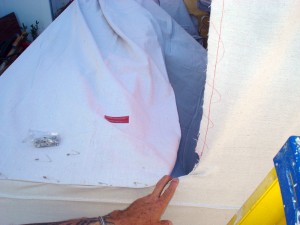
Playa armor for mutant vehicles comes in mad variety: weathered clapboard, diffraction-foil paneling, lycra skin over bent-steel skeleton, fur.
Back when we first dreamed up JANUS, I was thinking it could be a pipe-steel skeleton with some sort of canvas draping.
But David’s design turned out to be a lot lighter and tighter – and it required a different approach to the skin.
To keep the surface close to the original curves in the design, I started d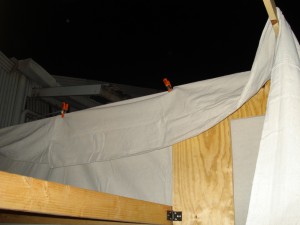 raping the material – 8-ounce coarse-weave canvas dropcloths from Home Depot – over the profiles that make up the pianos’ “shoulders.” I clamped them in place at the top …
raping the material – 8-ounce coarse-weave canvas dropcloths from Home Depot – over the profiles that make up the pianos’ “shoulders.” I clamped them in place at the top …
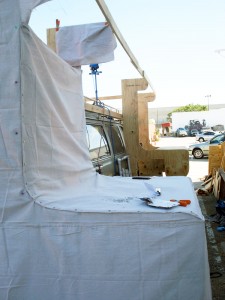
… and then pinned the fabric taut over the edges of the shapes.
 Then I took them home and shoved them through the sewing machine.
Then I took them home and shoved them through the sewing machine.
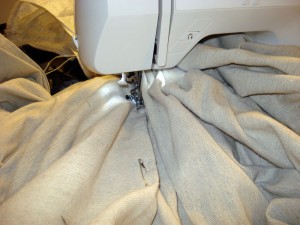 This turned *quite* ugly on several occasions. Thick Chinese canvas – quadruple-layered at a few key junctions – is a bit too thick even for denim needles and the best of sewing machines.
This turned *quite* ugly on several occasions. Thick Chinese canvas – quadruple-layered at a few key junctions – is a bit too thick even for denim needles and the best of sewing machines.
Oh, that and the fact that some sections of fabric require you to put a swath of fabric four feet wide through the machine’s tight jaw.
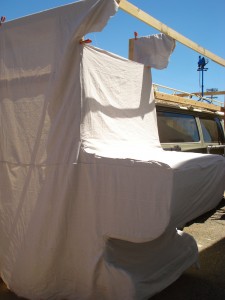
But after a few hours of sewing and cursing, I had something that actually fit. 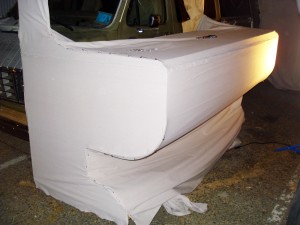
Here’s how the left front corner came out.
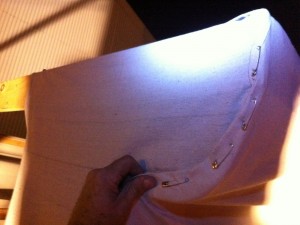 Here’s what it looks like up high…
Here’s what it looks like up high…
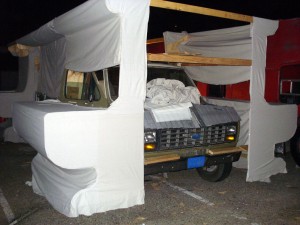 And here’s the front section. I’ll be sewing a panel shortly to cover the grille and front bumper, leaving ports for the headlights.
And here’s the front section. I’ll be sewing a panel shortly to cover the grille and front bumper, leaving ports for the headlights.

Since the Department of Mutant Vehicles insists that mutant vehicles can look nothing like street vehicles, I was advised to install a scrim that hides the line of the vehicle while still letting you see through.

This cheap polyester lace ($5.99/yd at JoAnn’s) should do the trick.
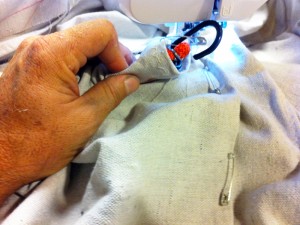 Then, lots more sewing. I’m sleeving a bungee here that will keep tension along the edge of the cloth covering the tabletops next to the front doors. Don’t ask.
Then, lots more sewing. I’m sleeving a bungee here that will keep tension along the edge of the cloth covering the tabletops next to the front doors. Don’t ask.
